How Many 220v Outlets on a 100 Amp Service
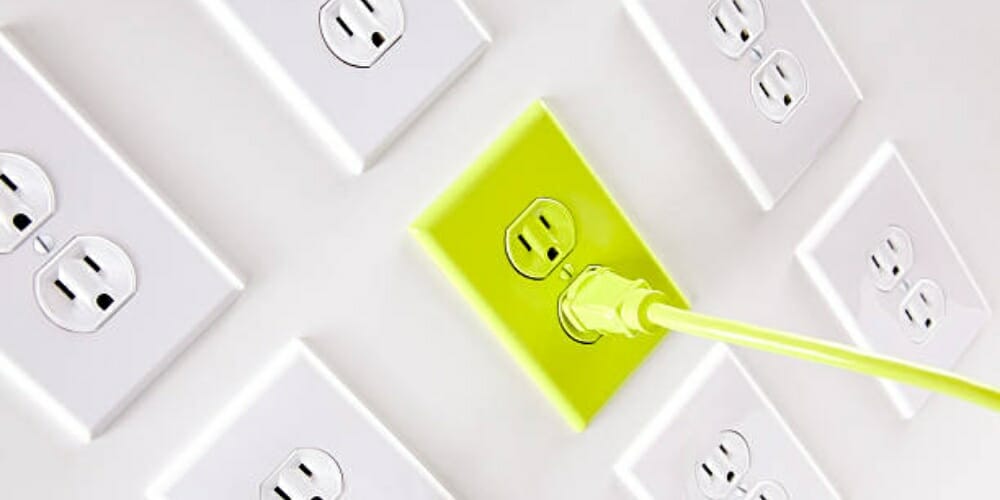
220V outlets are necessary for certain high-powered appliances. You get two hot wires to provide the higher voltage. They allow you to provide higher power while keeping current levels manageable safely.
But how many 220V outlets can you install in your home supplied by a 100-amp service?
The maximum number of breakers allowed on a 100-amp panel, as per the NEC, is 42, and on a 240V system, they are usually rated between 20 and 50 amps. There is no limit to the number of 220V outlets you can have, but you are restricted by the current and power limitations. If, for instance, you choose to install 20 breakers, the current limit will be four amps per breaker, and the power will be limited to 880 watts on each. But this assumes equal usage across all of them, whereas it can vary.
The safe maximum for the entire supply is 80 amps, or 17,600 watts, in concurrent use, or 100 amps, or 22,000 watts. Apart from this major limitation, you are restricted by the circuit breaker on each branch circuit, which is installed according to what the wire and the rest of the circuit can handle.
On a 20-amp branch circuit, the safe current limit is 16 amps, and the power limit is 3,520 watts. The limits on 30-amp and 40-amp circuits are 24 amps (5,280 watts) and 32 amps (7,040 watts), respectively. Although these limits define how much current or power you can draw at a time, I recommend installing only one outlet (either single or duplex) on a 20-amp circuit and up to two on 30/40-amp circuits. You can have more but bear in mind each branch circuit’s current and power limitations and the entire supply.
This article explains all of the above in detail with calculations and tables.
About 220-240V Outlets and 100-Amp Services
220-240V Outlets
Standard two- or three-prong 110-120V outlets are common in the United States.
However, some appliances requiring more power must have 220-240V outlets. They are becoming more common for central air conditioners, oven ranges, large kitchen appliances, water heaters, hot tubs, etc.
220-240V outlets are typically larger than 110-120V ones. Internally, they are usually powered by two 120-volt wires to provide dual voltage.
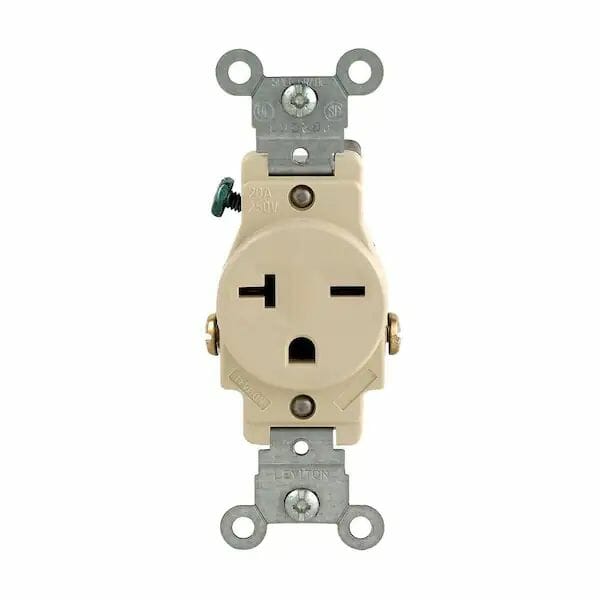 | 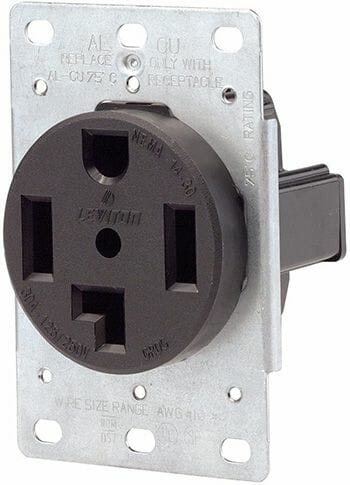 | 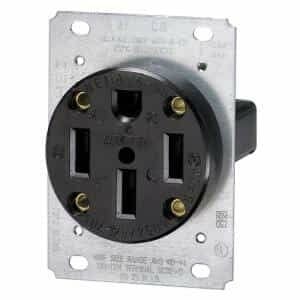 |
Different types of 220/240V outlets
100-Amp Services
Nowadays, a 120/240V single-phase, 100-amp service is common in the United States, although higher-amp services are found in many larger homes.
100-amp services have become more common since the 1960s. Before that, a 60-amp or less service was normal. A 100-amp service is usually sufficient for a home with less than 3,000 square feet of air-conditioned space. It is now considered the minimum. If the house covers more than 1,200 square feet, you may consider upgrading from a 100-amp panel if you have many large appliances or plan to expand.
Individual branch circuits on a 120V system are typically either 15 or 20 amps. On a 240V system, they usually range between 20 and 50 amps.
The number of 220V outlets you can have depends on this.
Number of 220V Outlets
Circuit Capacity
The maximum capacity of a 100-amp service panel with 220V outlets is (100 x 220 = ) 22,000 watts, and the maximum number of breakers allowed on it, as per the NEC, is 42.
However, it is more common to have between 20 and 40 circuit breakers on them, where each breaker is on a separate branch circuit. Each breaker is typically a 15- or 20-amp one. Higher-rated circuit breakers are used for heavier appliances.
So assuming all your branch circuits are 20-amp ones, the maximum load they can each handle is (20 x 220 = ) 4,400 watts.
To be safe, you shouldn’t normally operate more than 80% of a breaker and panel’s capacity. So based on this, the maximum load should not normally exceed (20 x 0.8 x 220 = ) 3,520 watts. In total (across all branches), the maximum continuous load of your home should not normally be greater than (22,000 x 0.8 = ) 17,600 watts.
Circuit Breakers
While a 60-amp main panel usually accommodates only one 220/240V outlet for a single high-powered appliance, a 100-amp service panel will allow you to have more.
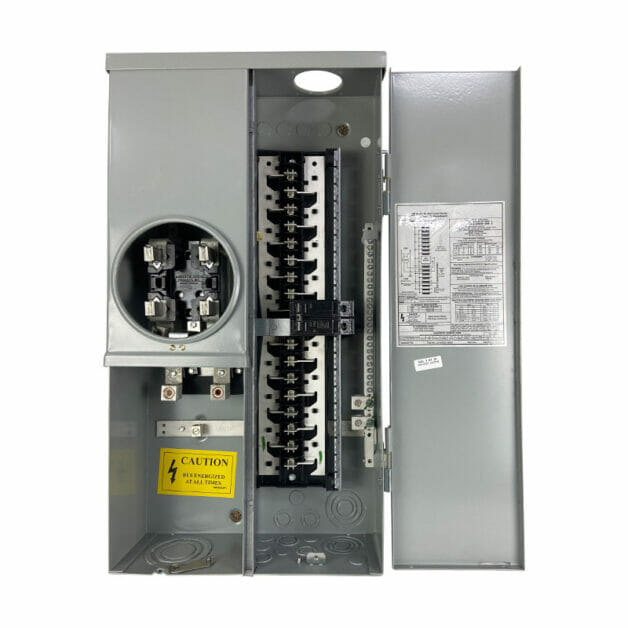
Exactly how many more 220V outlets you can have depends on the total power you need (up to the maximum of 17,600 watts) and the current limitations according to the wires and circuit breakers installed (up to the maximum of 80-100 amps). Also, every circuit with a 220V outlet must have a double-pole breaker.
So, let’s consider the circuit breakers first.
Theoretically, if the panel exclusively serves a single 220V outlet, you could operate an appliance requiring 80 amps of current, 80% of the 100-amp limit. It would require a hugely thick wire and is not practical. If, instead, you divided this into the top 42 breakers. Equally, the maximum current on each would be (80 / 42 = ) 1.9 amps, which is insufficient for practical use.
In practice, the number of breakers is between 20 and 40. Typical quantities people install are 20, 24, 30, 36, and 40. So here are some possible combinations you could plan for (20-40):
| Circuit breakers (number) | Current limit (in amps per branch) | Power limit (in watts per branch) |
| 20 | 4 | 880 |
| 24 | 3.3 | 733 |
| 30 | 2.6 | 586 |
| 36 | 2.2 | 488 |
| 40 | 2 | 440 |
The calculations above assume that all the outlets and circuit breakers are equal. In practice, most will be the same, but you might have a few larger-capacity breakers for those appliances that require more power.
This shows that the important thing to consider when deciding on the number of outlets you can have is the current and power limitations, regardless of how they are divided. Theoretically, you can have unlimited receptacles or outlets on each circuit with a breaker, but you are limited by how many of them you can operate simultaneously.
The NEC (Article 210.33(a)(1)) permits multiple outlets on branch circuits as long as the total current does not exceed 80% of that circuit’s current rating.
Now, let us consider the number of 220V outlets you can have.
Number of 220V Outlets
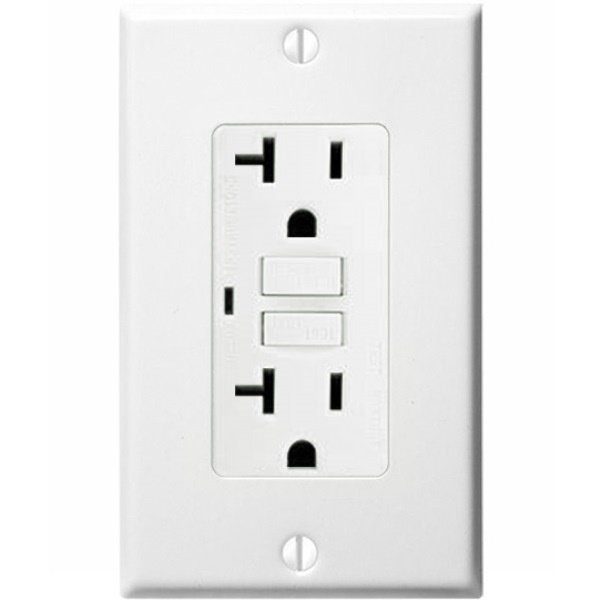
It should be clear by now that there is no limit, as such, to the number of 220V outlets you can have on a 100-amp service.
In short, if you would like to know exactly how many outlets you can install (or, rather, use concurrently) on the same 100-amp circuit, it depends on the power consumption of your appliances and how many receptacles are on each outlet.
The NEC code does not specify any such limitation either. However, it may be advisable to limit yourself to no more than 2 or 3 220V receptacles, according to the current and power limitations of the circuit breaker and your total concurrent usage. On a 20-amp or higher circuit, the 220V outlets should ideally be on dedicated circuits.
According to different circuit breaker sizes, I’ve recommended the maximum number of receptacles and outlets in the table below.
| Circuit breaker (amperage) | Safe current limit (in amps) | Power limit (in watts) | Max. receptacles (220V) | Outlets (duplex) (advisable) |
| 15 | 12 | 2,640 | 1 | 1 |
| 20 | 16 | 3,520 | 1 or 2 | 1 |
| 25 | 20 | 4,400 | 2 | 1 |
| 30 | 24 | 5,280 | 2 or 3 | 1-2 |
| 35 | 28 | 6,160 | 3 | 2 |
| 40 | 32 | 7,040 | 3 or 4 | 2 |
| 45 | 36 | 7,920 | 4 | 2 |
| 50 | 40 | 8,800 | 4 or 5 | 2-3 |
| 55 | 44 | 9,680 | 5 | 3 |
| 60 | 48 | 10,560 | 5 or 6 | 3 |
Do You Need More Outlets?
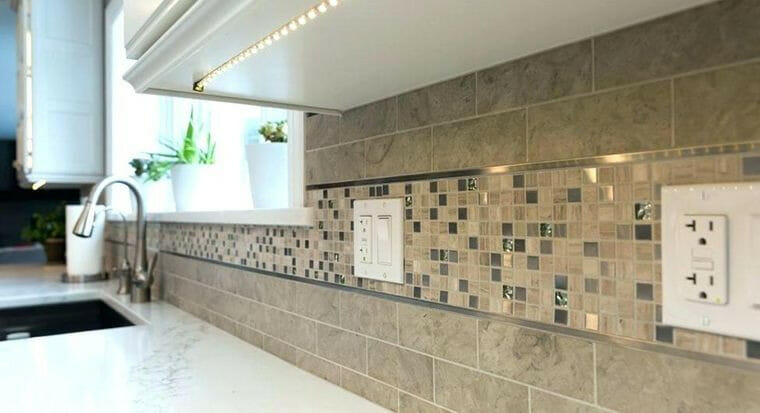
If you need to have more 220V outlets than recommended above, you can.
As the NEC is unlimited, you can install more 220V outlets on your 100-amp service if necessary. The important thing is not to exceed the total current or power limitation on that circuit at any one time, irrespective of how many receptacles or appliances are operational together.
Plus, you cannot exceed the total simultaneous current or power limitation of the main electricity supply, which is 80 amps and 17,600 watts, respectively, for the entire home.
Apart from considering how many outlets to install, keep in mind the type of circuit breaker and wire gauge you will need for each type of circuit (as per the breaker size) (see under Related Questions below).
FAQs
What appliances require you to have a 220V outlet?
Appliances most likely to require a 220V outlet include air conditioners, water heaters, electric motors, dryers, air compressors, stoves, electric ovens, and electric ranges.
What types of 220V outlets are available?
Three types of 220V outlets are available. 20-amp ones are normally used in a garage for power tools, 30-amp ones for most other 220V appliances, and 50-amp ones (with four wires) for extra-high-powered appliances, such as a stove-oven combo.
How does a 220V branch circuit differ from a 110/120V one?
A 220V branch circuit has three wires: Two hot ones (black and red), each supplying 110-120V to provide a total of 220-240V, and one appliance ground wire. A neutral wire may or may not be necessary. A 110/120V circuit has only one hot wire beside the neutral wire.
Do 220V loads require a neutral connection?
Some loads can do without having a neutral wire connected, as they are powered by two hot wires (in a single-phase supply), but some will still need it. Usually, water heaters and motors don’t need a neutral, whereas some electric ranges do. [Herres, 2015]
What type of circuit breaker do I need to operate on 220V?
You will need a double-pole breaker to ensure that both hot wire connections can be tripped simultaneously.
What gauge wire do you need for a 220V outlet?
The wire gauge is determined by the current and power requirements, not the voltage. Usually, a 12-gauge wire is sufficient for a 15- or 20-amp circuit, but a 30-amp circuit will need a 10-gauge wire.
Outlets with what current rating can I have on a particular branch circuit?
The current rating of the outlets cannot exceed the current rating of the branch circuit. For example, a 30-amp circuit can only accommodate up to 30-amp outlets.
Reference
Book: David Herres. The homeowners’ DIY guide to electrical wiring. McGraw Hill. 2015.
Image References
100-amp service panel: https://www.alibaba.com/product-detail/outdoor-3-phase-Single-ac-dc_1600484634194.html.
240V outlets: https://www.homedepot.com/p/Leviton-20-Amp-Commercial-Grade-Double-Pole-Single-Outlet-Ivory-R61-05821-0IS/100357020, https://www.cloverelectric.com/install-replace/240-volt-outlet-installation
220V outlets above a kitchen counter: ArchAngel Electric (Power outlets above a kitchen counter): https://archangelelectricinc.com/services/.
